| |||||||||||||||||
| |||||||||||||||||
| |||||||||||||||||
The 1950 United States Senate election in North Carolina was held on November 7, 1950. Incumbent Democratic Senator Clyde R. Hoey was re-elected to a second term in office over Republican Halsey B. Leavitt.
| |||||||||||||||||
| |||||||||||||||||
| |||||||||||||||||
| Elections in North Carolina |
|---|
 |
The 1950 United States Senate election in North Carolina was held on November 7, 1950. Incumbent Democratic Senator Clyde R. Hoey was re-elected to a second term in office over Republican Halsey B. Leavitt.
| Party | Candidate | Votes | % | ±% | |
|---|---|---|---|---|---|
| Democratic | Clyde R. Hoey (incumbent) | 376,472 | 68.67% | ||
| Republican | Halsey B. Leavitt | 171,804 | 31.34% | ||
| Total votes | 548,276 | 100.00% | |||
| | This North Carolina elections-related article is a stub. You can help Wikipedia by expanding it. |

Clyde Roark Hoey was a Democratic politician from North Carolina. He served in both houses of the state legislature and served briefly in the U.S. House of Representatives from 1919 to 1921. He was North Carolina's governor from 1937 to 1941. He entered the U.S. Senate in 1945 and served there until his death in 1954, only days before the Brown v. Board of Education decision. He was a segregationist.
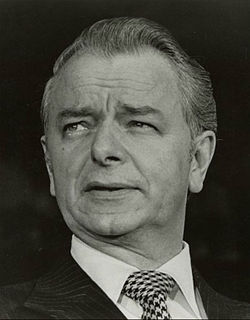
The 1978 United States Senate elections in the middle of Democratic President Jimmy Carter's term. Thirteen seats changed hands between parties, resulting in a net gain of three seats for the Republicans. Democrats nevertheless retained a 58–41 majority.

The 1974 United States Senate elections were held in the wake of the Watergate scandal, Richard M. Nixon's resignation from the presidency, and Gerald Ford's subsequent pardon of Nixon. Economic issues, specifically inflation and stagnation, were also a factor that contributed to Republican losses. As an immediate result of the November 1974 elections, Democrats made a net gain of three seats from the Republicans, as they defeated Republican incumbents in Colorado and Kentucky and picked up open seats in Florida and Vermont, while Republicans won the open seat in Nevada. Following the elections, at the beginning of the 94th U.S. Congress, the Democratic caucus controlled 61 seats and the Republican caucus controlled 38 seats.

The 1968 United States Senate elections were elections for the United States Senate which coincided with the presidential election. Although Richard Nixon won the presidential election narrowly, the Republicans picked up five net seats in the Senate. Republicans would gain another seat after the election when Alaska Republican Ted Stevens was appointed to replace Democrat Bob Bartlett.

The 1964 United States Senate elections coincided with the election of President Lyndon B. Johnson by an overwhelming majority, to a full term. His Democratic Party picked up a net two seats from the Republicans. As of 2021, this is the last time either party has had a two-thirds majority in the Senate, which would have hypothetically allowed the Senate Democrats to override a veto, convict and expel certain officials, or invoke cloture without any votes from Republicans. The Senate election coincided with Democratic gains in the House in the same year.

The 1958 United States Senate elections were elections for the United States Senate which occurred in the middle of President Dwight D. Eisenhower's second term.

The 1954 United States Senate elections was a midterm election in the first term of Dwight D. Eisenhower's presidency. Eisenhower's Republican party lost a net of two seats to the Democratic opposition. This small change was just enough to give Democrats control of the chamber with the support of an Independent who caucused with them.

The 1950 United States Senate elections occurred in the middle of Harry S. Truman's second term as President. As with most 20th-century second-term mid-terms, the party not holding the Presidency made significant gains. The Republican opposition made a net gain of five seats, taking advantage of the Democratic administration's declining popularity during the Cold War and the aftermath of the Recession of 1949. The Democrats held a narrow 49-to-47-seat majority after the election. This was the first time since 1932 that the Senate Majority Leader lost his seat, and the only instance of the majority leader losing his seat while his party retained the majority.

The 1948 United States Senate elections were elections which coincided with the election of Democratic President Harry S. Truman for a full term. Truman had campaigned against an "obstructionist" Congress that had blocked many of his initiatives, and in addition the U.S. economy recovered from the postwar recession of 1946–47 by election day. Thus Truman was rewarded with a Democratic gain of nine seats in the Senate, enough to give them control of the chamber.

The 1950 New York state election was held on November 7, 1950, to elect the governor, the lieutenant governor, the state comptroller, the attorney general and a U.S. Senator, as well as all members of the New York State Assembly and the New York State Senate.

The 2000 United States Senate election in Missouri was held on November 7, 2000, to select the next U.S. Senator from Missouri. Incumbent Republican Senator John Ashcroft ran for reelection to a second term, but he was defeated by Democratic Governor Mel Carnahan despite Carnahan's death in a plane crash three weeks before election day. The new governor, Roger B. Wilson, subsequently appointed Carnahan's widow Jean to the seat.
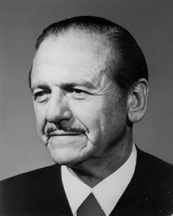
The 1970 United States Senate election in Utah was held on November 3, 1970.

The 1974 United States Senate election in Alaska took place on November 5, 1974. Incumbent Democratic U.S. Senator Mike Gravel was re-elected to a second term in office, defeating Republican State Senator Clyde "C.R." Lewis.
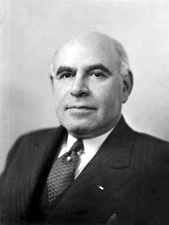
The United States Senate election of 1950 in New York was held on November 7, 1950. Incumbent Democratic Senator Herbert H. Lehman was re-elected to a full term in office over Republican Joe Hanley.
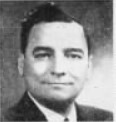
The 1950 United States Senate election in Indiana took place on November 7, 1950. Incumbent Republican U.S. Senator Homer Capehart was re-elected to a second term in office, defeating Democrat Alex Campbell.

The 1916 United States Senate election in Florida was held on November 7, 1916.

The 1944 United States Senate election in North Carolina was held on November 7, 1944. Incumbent Democratic Senator Robert Rice Reynolds did not run for a third term in office. Former Governor of North Carolina Clyde R. Hoey won the open seat, defeating U.S. Representative Cameron A. Morrison in the Democratic primary and Republican attorney A.I. Ferree in the general election.

The 1944 United States Senate election in California was held on November 7, 1944.
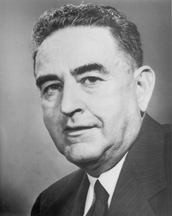
The 1954 United States Senate election in North Carolina was held on November 2, 1954. Interim Democratic Senator Alton A. Lennon, who had been appointed to fill the vacant seat left by the death of Willis Smith, ran for re-election. Lennon lost the Democratic primary to former Governor W. Kerr Scott, who easily won the general election over Republican Paul C. West.

The 1936 North Carolina gubernatorial election was held on November 3, 1936. Democratic nominee Clyde R. Hoey defeated Republican nominee Gilliam Grissom with 66.69% of the vote.